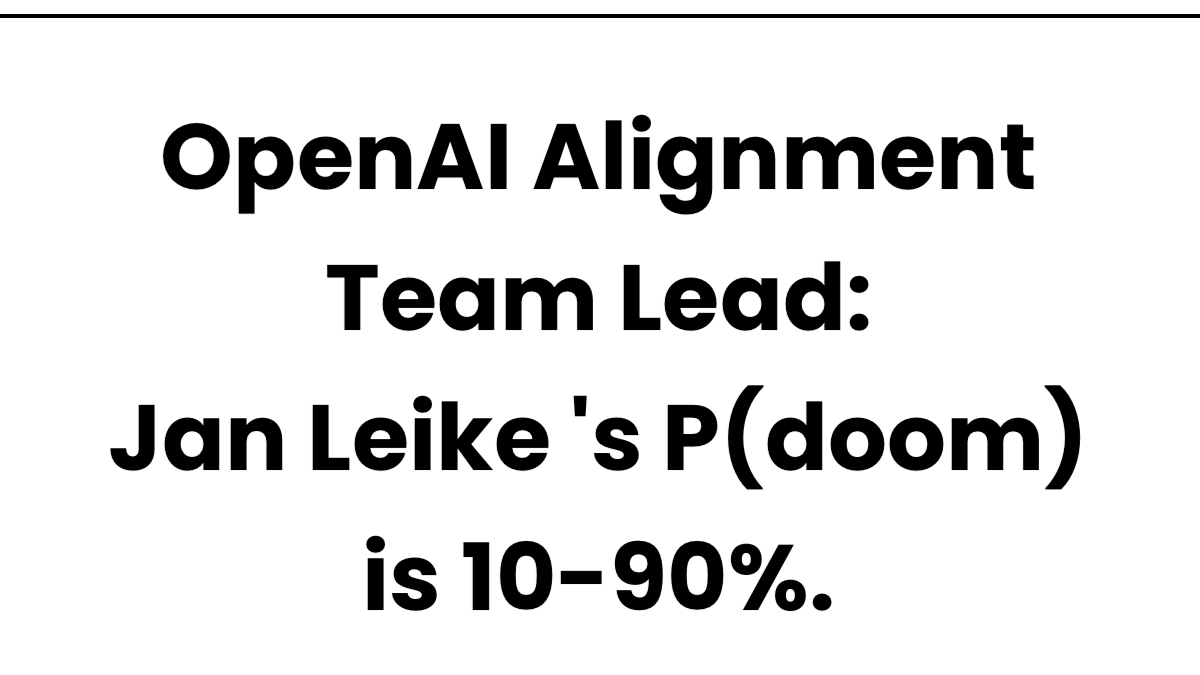OpenAI Alignment Team Lead: Jan Leike ‘s P(doom) is, like, 10-90%.
OpenAI Alignment Team Lead @JanLeike‘s P(doom) is 10-90%. pic.twitter.com/CFuyQxQ0hf
— Liron Shapira (@liron) August 8, 2023
See the entire interview and transcript here:
LEIKE. And then if you actually wanted to give a probability of doom, I think the reason why it’s so hard is because there are so many different scenarios of how the future could go and if you want to have an accurate probability, you need to integrate over this large space. And I don’t think that’s fundamentally helpful. I think what’s important is how much can we make things better and what are the best paths to do this.
WIBLIN. Yeah, I didn’t spend a lot of time trying to precisely pin down my personal P doom because I suppose my guess is that it’s more than 10%, less than 90%. So it’s incredibly important that we work to lower that number, but it’s not so high that we’re completely screwed and that and there’s no hope. And kind of within that range, it doesn’t seem like it’s going to affect my decisions on a day to day basis all that much. So I’m just kind of happy to leave it there.
LEIKE. Yeah, I think that’s probably the range I would give too. So you asked me why am I optimistic? And I want to give you a bunch more reasons because I think there’s a lot of reasons and I think fundamentally the most important thing is that I think alignment is tractable. I think we can actually make a lot of progress if we focus on it and we put an effort into it. And I think there’s a lot of research progress to be made that we can actually make with a small dedicated team over the course of a year, or four. Honestly, it really feels like we have a real angle of attack on the problem that we can actually iterate on, we can actually build towards. And I think it’s pretty likely going to work, actually. And that’s really wild and it’s really exciting. We have this hard problem that we’ve been talking about for years and years and now we have a real shot at actually solving it and that’s be so good if we did. But some of the other reasons why I’m optimistic is like, I think fundamentally evaluation is easier in generation for a lot of tasks that we care about, including alignment research, which is why I think we can get a lot of leverage by using AI to automate parts of all of alignment research. – 1:15:29


